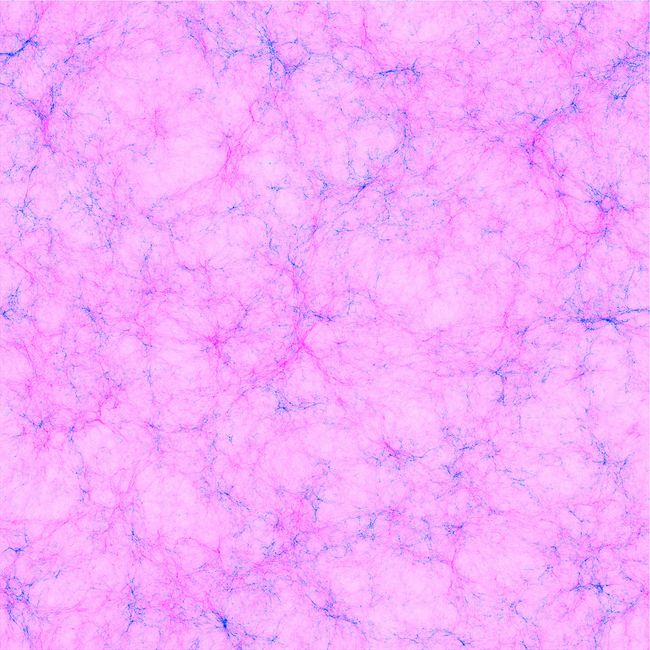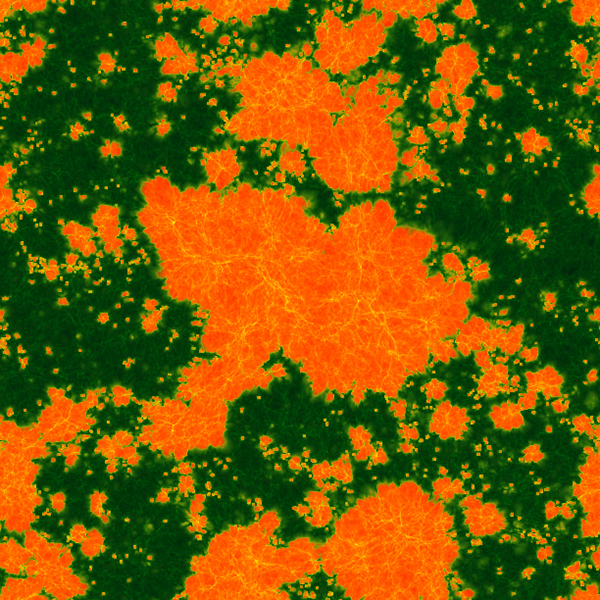ASTROPHYSICS
LocalUniverse - Our Neighbourhood in the Universe
Principal Investigator:
Dr. Ilian Iliev
Affiliation:
Astronomy Centre, Physics and Astronomy, University of Sussex (U.K.)
Local Project ID:
pr86be
HPC Platform used:
SuperMUC of LRZ
Date published:
Scientists used GCS supercomputing resources to perform a series of state-of-the-art constrained simulations of the first galaxies and their radiative effects in our Local Universe, among the largest and most detailed of their kind, following tens of billions of particles, while also modelling the complex physics involved in this process.
After the Big Bang the Universe expanded and cooled, eventually turning the hot primordial plasma into a sea of neutral gas. This recombination process started the period in the evolution of the Universe commonly referred to as the Cosmic "Dark Ages". The small quantum density inhomogeneities gradually grew under the force of gravity, resulting in the formation of the First Stars and Galaxies. The light from these first objects ended the Dark Ages between a few hundred million years after the Big Bang and slowly reionized the entire intergalactic medium, a global transition commonly referred to as Epoch of Reionization. Due to the complex nature of the reionization process, it is best studied through large-scale numerical simulations. However, such simulations present considerable challenges due to the complex processes and wide range of scales involved and are currently at the forefront of cosmological research. The recent availability of Petascale supercomputers made such simulations finally possible.
In this project a team of scientists performed a series of state-of-the-art constrained simulations of the first galaxies and their radiative effects in our Local Universe, among the largest and most detailed of their kind, following tens of billions of particles, while also modelling the complex physics involved in this process. These simulations, which were enabled through the European HPC initiative PRACE (Partnership for Advanced Computing in Europe), allowed the researchers to address many important questions related to the formation of the first galaxies and to their observable signatures. The large international team working on this project is lead by Dr. Ilian Iliev (University of Sussex) and involves scientists from UK, Spain, Germany, France, Israel and USA. Within this project a number of large-scale, massively-parallel structure formation and radiative transfer simulations were performed on GCS supercomputer SuperMUC, typically using between 4,000 and 33,000 computing cores simultaneously. The results are currently being analysed and will provide important insights on the nature of the first galaxies and their radiative effects on structure formation, particularly through the lens of local structures in our own neighbourhood in the universe.

Figure 1: Cosmic web in the local neighbourhood at redshift z=6.2 from one of the simulations peformed within this project (with 2,0483 particles=8.6 billion, on a 4,0963 fine grid in a comoving volume of 91 Mpc on a side.
Copyright: University of Sussex, Astronomy Centre
Figure 2: Spatial slice of the ionized and neutral gas density based on a radiative transfer simulation of the effects of the first galaxies (volume is 67 Mpc per side, with 6123 grid) at redshift z=7.35. Shown are the density field (green) overlayed with the ionized fraction (orange/yellow).
Copyright: University of Sussex, Astronomy CentreScientific Contact:
Dr. Ilian Iliev
Astronomy Centre, Physics and Astronomy, University of Sussex (U.K.)
e-mail: I.T.Iliev@sussex.ac.uk